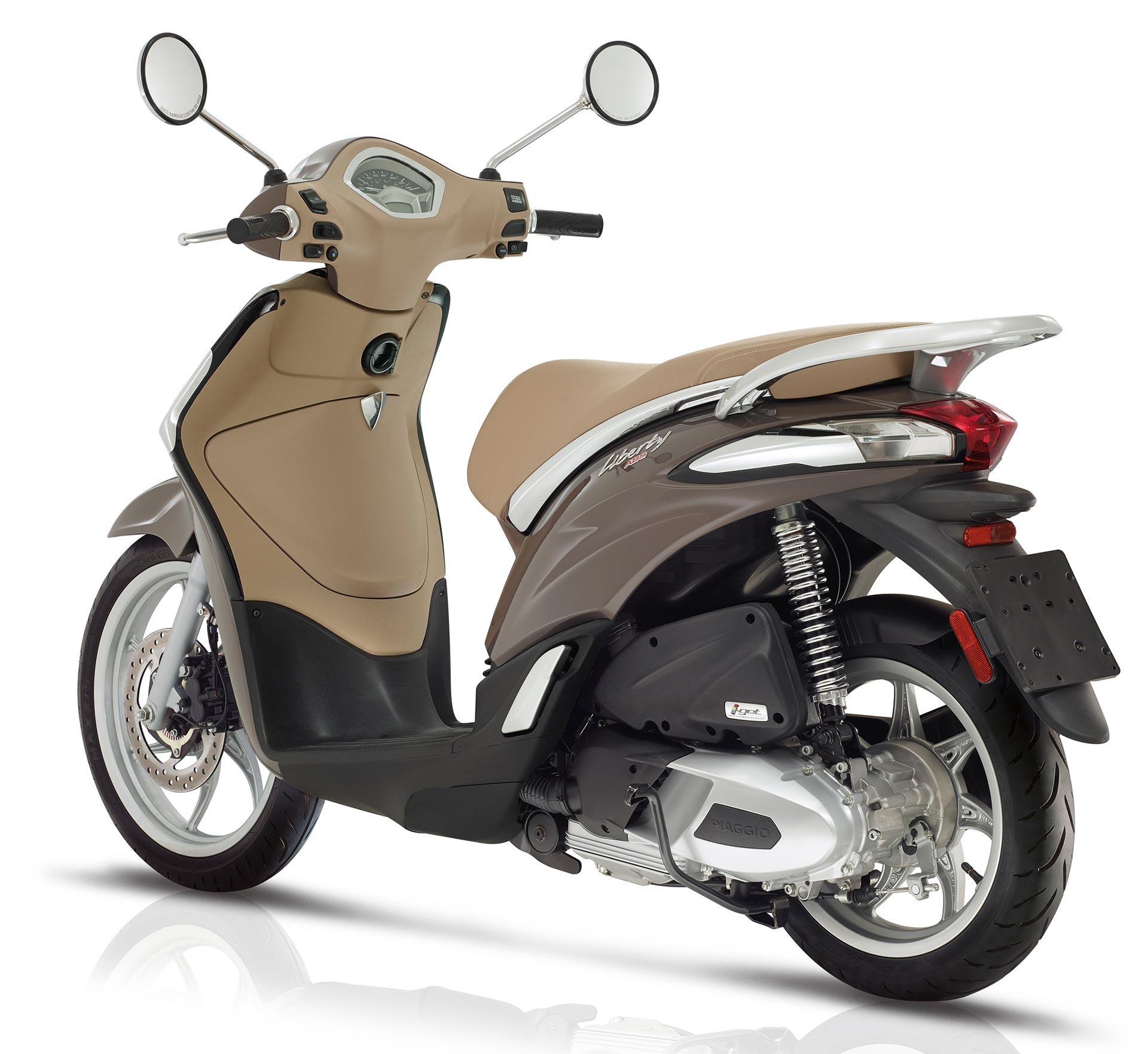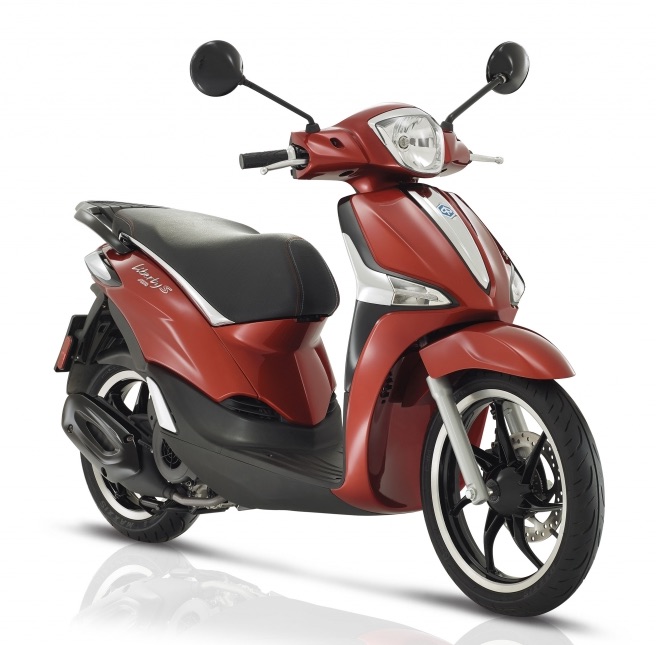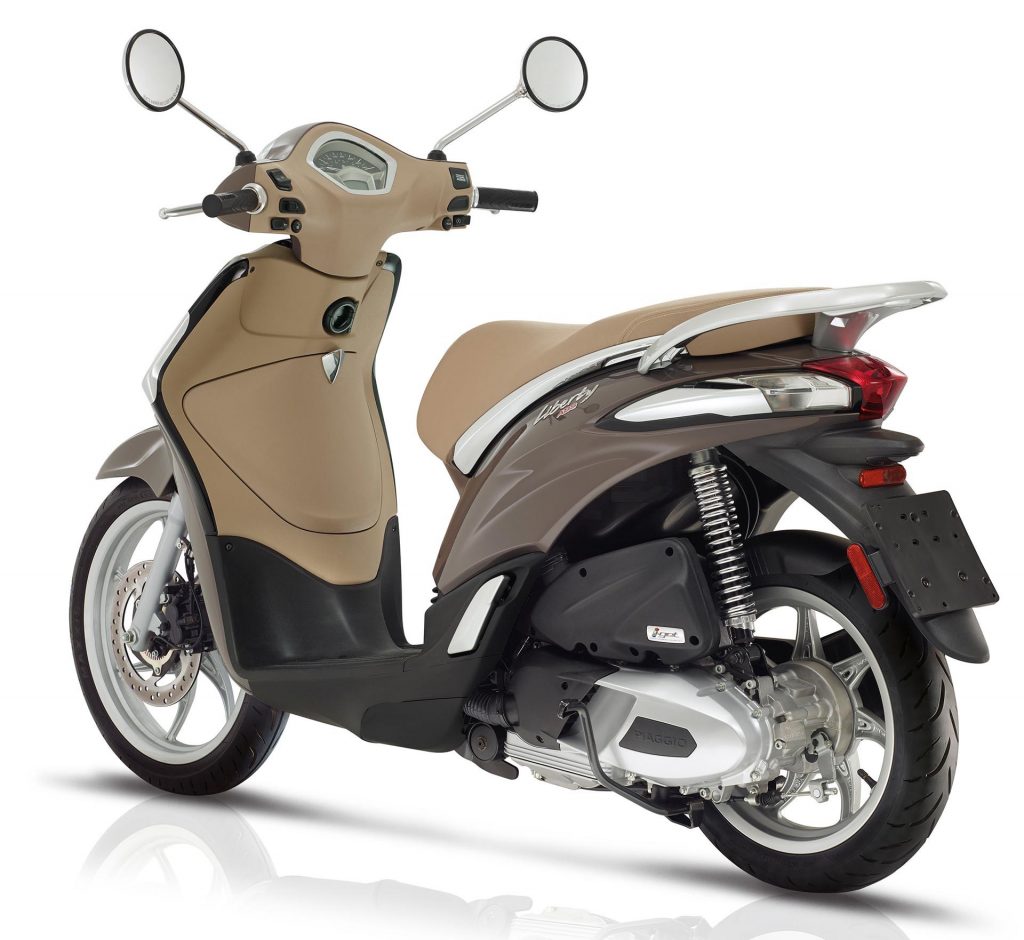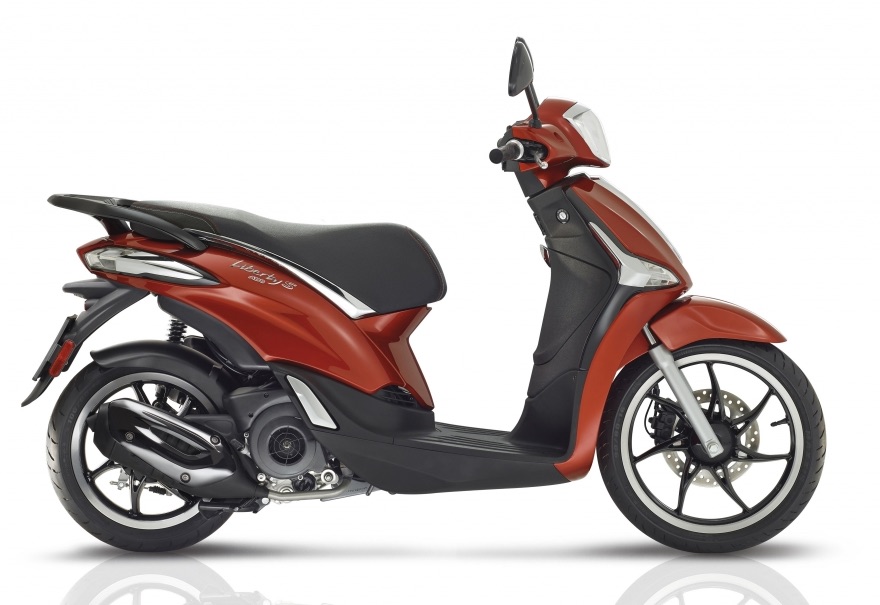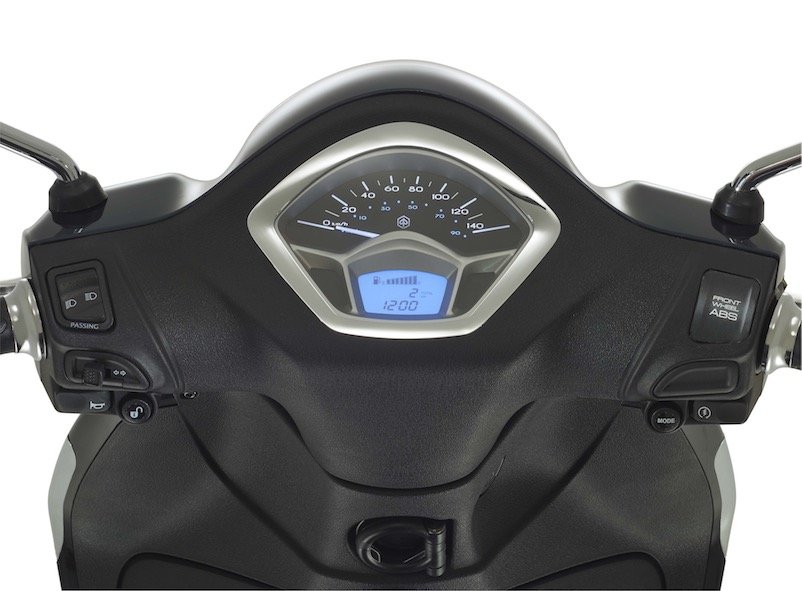PIAGGIO LIBERTY 50 / 150
The Liberty is a large wheeled and top selling scooter from Piaggio. Since its global introduction in 1997, the Liberty has sold nearly 1 million units. Over much of its run, the Liberty hasn’t been offered in North America, but Piaggio introduced it to the USA and Canada for 2018. It remains on sale as of 2019.
Model Background
The first generation of Liberty was introduced overseas in 1997 and actually offered in the USA – albeit briefly – from 2003 – 2004 when the Piaggio brand was just starting here. These first generation Liberty’s were sold under the names LT50 and LT150 in the USA, which was Piaggio’s naming strategy in some markets where they were also selling the ET50 and ET150. As those older LT50/LT150 scooters are entirely different machines than the modern Liberty, the LT50/150 are reviewed separately.
After the LT was discontinued in North America, Piaggio released a second generation (2004) and third generation (2009) in other markets. Finally, a fourth generation Liberty was unveiled at the 2015 Milan motorcycle show and this model was released internationally in 2016 and in the USA and Canada in early 2017 as 2018 models.
This 4th generation Liberty is offered in two engine sizes (50 and 150) and two trims (regular, S). The S trim is only subtly different than the regular version. The Liberty S replaces the chrome accents on the regular version with more aggressive looking black accents. So it pairs more aggressive colors (red, grey) with black rims, while the regular Liberty pairs other colors (white, blue) with chrome rims and trim.
Engine
The two motor options for the Liberty are a 50cc and 155cc (in some markets there is also a 125cc, which is a reduced bore version of the 155cc). With any engine option, you’re getting a 3-valve, fuel injected air cooled motor, but the 155cc engine makes 4x the amount of power as the 50cc (12.9HP vs 3.2HP).
Piaggio is calling the larger 155cc motor option is called an “i-Get” engine, which is short for “Italian green experience” and really means that Piaggio has tuned this for as good of fuel economy as they could. The motor isn’t an all new design, but rather a new iteration of their mid-size LEADER engine they’ve been using on their mid-sized machines for over a decade. The bore and stroke of this motor is the same as the 155cc is Piaggio’s Fly 150 model, but only the Liberty has the new i-Get version, so boasts 12.9HP instead of 12.1. Top speed is likely a bit higher as well, likely 65mph compared to about 60mph for the Fly 150.
It’s nice to see Piaggio squeezing more power of this motor, and their claims of 10-20% increases in fuel economy are good news as well. The only real downside to this motor is the air-cooling, which likely works fine but isn’t ideal for extended trips in hot climates and tends to lead to a bit shorter engine life.
The 50cc engine also differs from the small engine used by Piaggio in the Fly 50. Again it has the same bore and stroke, but it’s a newer i-Get version of Piaggio’s long running Hi-PER4 design, so it has fewer valves (3 vs 4) but supposedly better milage. The power rating (3.2 HP) is lower than the Fly (4.3 HP) and Piaggio’s Typhoon 50 (4.6 HP).
Brakes / Suspension / Handling
A headline feature of the Liberty is the standard ABS. Buyers should be careful to note however that it’s only present on the Liberty 150, and even here it’s only on the front wheel. Indeed the front wheel is by far the most important for ABS, as locking up the rear doesn’t lead to disaster nearly as easily, so it’s worth applauding Piaggio even if ABS isn’t everywhere. Competing scooters like Honda’s PCX 150 and Yamaha’s SMAX don’t have ABS at all. With ABS plus large wheels, the Liberty 150 has excellent braking capabilities.
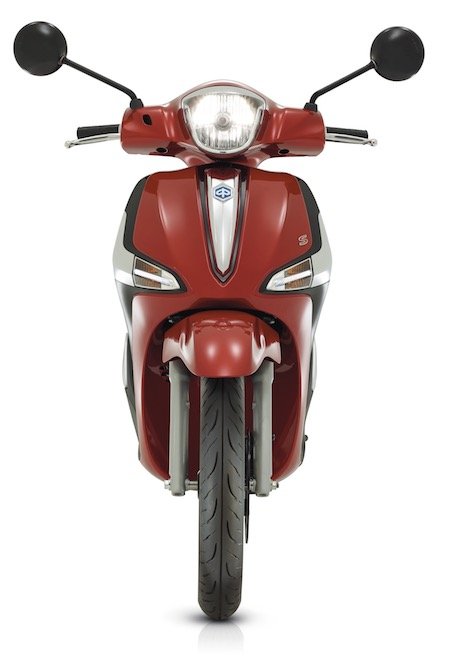
The suspension of the Liberty is standard fare, with 3” of travel front and back. The rear suspension is a single shock which does feature adjustable pre-load. Also worth noting is that the Liberty is fairly light (234 lbs or 255cc depending on the motor). Similar scooters like Yamaha’s SMAX are nearly 100lbs heavier (329lbs).
Design and Amenities
Piaggio has done a nice job with the style of the Liberty. It’s difficult to make a large wheeled scooter look good, but the Liberty looks far better than Piaggio’s first attempt with the LT50/150. Piaggio has taken design cues from it’s successful BV350 model and applied them to the Liberty, so it’s easy to confuse to the two. The Liberty looks just like a smaller sibling to the BV350. Perhaps only Kymco’s People GT exceeds the Liberty in making a large wheeled scooter look good.
The instruments of the Liberty also look good. They’re quite similar to what Piaggio did with the Vespa Primavera and Sprint in having a center analog speedometer with a small LCD underneath showing fuel, clock and odometer. I personally prefer an analog fuel gauge because a digital one doesn’t provide as much detail, but it looks good and functions fine.
While large wheels offer practical advantages in braking and handling, the large rear wheel does cut into the storage space. Piaggio is claiming a 50% increase in underseat storage with the new generation to 17L, but this is still less than half the underseat space some smaller wheeled scooters have. Thus, a full face helmet can’t be securely stowed under the seat and only an open face helmet will fit.
While the underseat space is limited, Piaggio has freed up quite a bit of glovebox space by moving the battery elsewhere. The glovebox now totals 4L (1 gallon), which is certainly handy and appreciated.
Discussion
The first question to ask yourself is whether you want a large wheeled scooter. If you value things like handling on rough roads and braking ability more than style, then large wheels is what you want. Conversely, if you stick to lower speed and smoother roads then large wheels will have less of an advantage. Most mid-sized modern scooters offer a trade off using medium sized wheels, like Yamaha’s SMAX with 13” wheels and Honda’s PCX 150 with 14”. The Liberty is an unapologetic large wheeled machine with a 16” rim up front and 14” in the back with tall rubber.
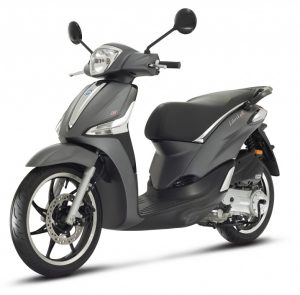
The Liberty 150 stands out in the mid-sized segment by offering large wheels, ABS and a refined motor for a fair price of $2999 (USA, 2018). Competitors from Honda and Yamaha are about $500 more. Kymco typically offers scooters with similar or better value to Piaggio, and indeed their Like 200 (163cc) is a phenomenal value at only $2699, but it’s quite a different machine than the Liberty with smaller wheels and retro styling. Thus, for the practical buyer in the mid-sized segment the Liberty stands alone in offering a well rounded package of large wheels, a refined motor and a fair price. It is too bad the S versions add another $100 to the price tag ($3099), because there doesn’t seem to be any differences other than color choice.
The Liberty 50 competes in a more crowed market, and one where large wheels have fewer advantages. It doesn’t stand out here like the Liberty 150 does, as it’s $2399 MSRP (USA, 2018) doesn’t undercut too many competitors on price. Practical buyers might be wooed by Kymco’s Agility 50 which is hundreds less ($1699) or Genuine’s Buddy or Buddy Kick models. Still, the Liberty is the largest wheeled 50cc on sale and it’s a nice modern machine, so if you’re less interested in a sporty or retro scooter and just want a modern machine for reliable transportation, then the Liberty is a good choice.
Pros:
- Stable ride/handling
- Refined motors with good mileage
- Nice styling
Cons:
- Underseat storage
- Air cooled motors
Links:
MotorscooterGuide Forums – Visit the forums on this site to chat about this scoot.
ModernVespa – These forums are a good spot to find other owners
Liberty Review – Nice review of the Liberty 150 by JustGottaScoot
Key Specs – Liberty 50 / 150:
- Engine: 50cc or 155cc air cooled, 3-valve, 4-stroke
- Horsepower: 3.2 HP @ 7500 RPM or 12.9 HP @ 7750 RPM
- Torque: 2.3 ft lbs @ 7250 RPM or 9.6 ft-lbs @ 6500 RPM
- Transmission: CVT
- Bore & Stroke: 39.0mm x 41.8mm or 58mm x 58.6mm
- Compression Ratio:
- Fuel Delivery: Injected
- Wheelbase: 76.6”
- Weight: 234 lbs / 255 lbs
- Starter: Electric
- Seat Height: 30.7” / 31.1”
- Fuel Tank: 1.6 gallon / 6 liters
- Brakes: 240mm dual piston disc / 140mm drum.
- ABS: Front wheel ABS on Liberty 150, none on 50cc.
- Front Suspension: Telescopic fork, 76mm travel
- Rear Suspension: Single shock, 5 position pre-load, 74.5mm travel
- Front Tire: 90/80-16
- Rear Tire: 100/80-14
Colors:
- Liberty 2018 – 2019: Midnight Blue, White
- Liberty S 2018 – 2019: Red, Grey Titanium

